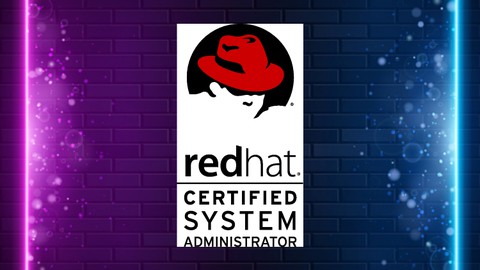RHCSA Certified system administrator Red Hat practice tests

[New] RHCSA Certified system administrator Red Hat practice tests 2022
Description
Description
RHCSA exam candidates should be able to accomplish the tasks below without assistance. These have been grouped into several categories.
An IT professional who has earned the Red Hat Certified System Administrator is able to perform the core system administration skills required in Red Hat Enterprise Linux environments.
Topics
Understand and use essential tools
- Access a shell prompt and issue commands with correct syntax
- Use input-output redirection (>\, >>\, |\, 2>\, etc.)
- Use grep and regular expressions to analyze text
- Access remote systems using SSH
- Log in and switch users in multiuser targets
- Archive, compress, unpack, and uncompress files using tar, star, gzip, and bzip2
- Create and edit text files
- Create, delete, copy, and move files and directories
- Create hard and soft links
- List, set, and change standard ugo/rwx permissions
- Locate, read, and use system documentation including man, info, and files in /usr/share/doc
Create simple shell scripts
- Conditionally execute code (use of: if, test, [], etc.)
- Use Looping constructs (for, etc.) to process file, command line input
- Process script inputs ($1, $2, etc.)
- Processing output of shell commands within a script
- Processing shell command exit codes
Operate running systems
- Boot, reboot, and shut down a system normally
- Boot systems into different targets manually
- Interrupt the boot process in order to gain access to a system
- Identify CPU/memory intensive processes and kill processes
- Adjust process scheduling
- Manage tuning profiles
- Locate and interpret system log files and journals
- Preserve system journals
- Start, stop, and check the status of network services
- Securely transfer files between systems
Configure local storage
- List, create, delete partitions on MBR and GPT disks
- Create and remove physical volumes
- Assign physical volumes to volume groups
- Create and delete logical volumes
- Configure systems to mount file systems at boot by universally unique ID (UUID) or label
- Add new partitions and logical volumes, and swap to a system non-destructively
Create and configure file systems
- Create, mount, unmount, and use vfat, ext4, and xfs file systems
- Mount and unmount network file systems using NFS
- Extend existing logical volumes
- Create and configure set-GID directories for collaboration
- Configure disk compression
- Manage layered storage
- Diagnose and correct file permission problems
Deploy, configure, and maintain systems
- Schedule tasks using at and cron
- Start and stop services and configure services to start automatically at boot
- Configure systems to boot into a specific target automatically
- Configure time service clients
- Install and update software packages from Red Hat Network, a remote repository, or from the local file system
- Work with package module streams
- Modify the system bootloader
Manage basic networking
- Configure IPv4 and IPv6 addresses
- Configure hostname resolution
- Configure network services to start automatically at boot
- Restrict network access using firewall-cmd/firewall
Manage users and groups
- Create, delete, and modify local user accounts
- Change passwords and adjust password aging for local user accounts
- Create, delete, and modify local groups and group memberships
- Configure superuser access
Manage security
- Configure firewall settings using firewall-cmd/firewalld
- Create and use file access control lists
- Configure key-based authentication for SSH
- Set enforcing and permissive modes for SELinux
- List and identify SELinux file and process context
- Restore default file contexts
- Use boolean settings to modify system SELinux settings
- Diagnose and address routine SELinux policy violations
Manage containers
- Find and retrieve container images from a remote registry
- Inspect container images
- Perform container management using commands such as podman and skopeo
- Perform basic container management such as running, starting, stopping, and listing running containers
- Run a service inside a container
- Configure a container to start automatically as a systemd service
- Attach persistent storage to a container
Who this course is for:
- RHCSA Certified system administrator Red Hat Exam candidates



